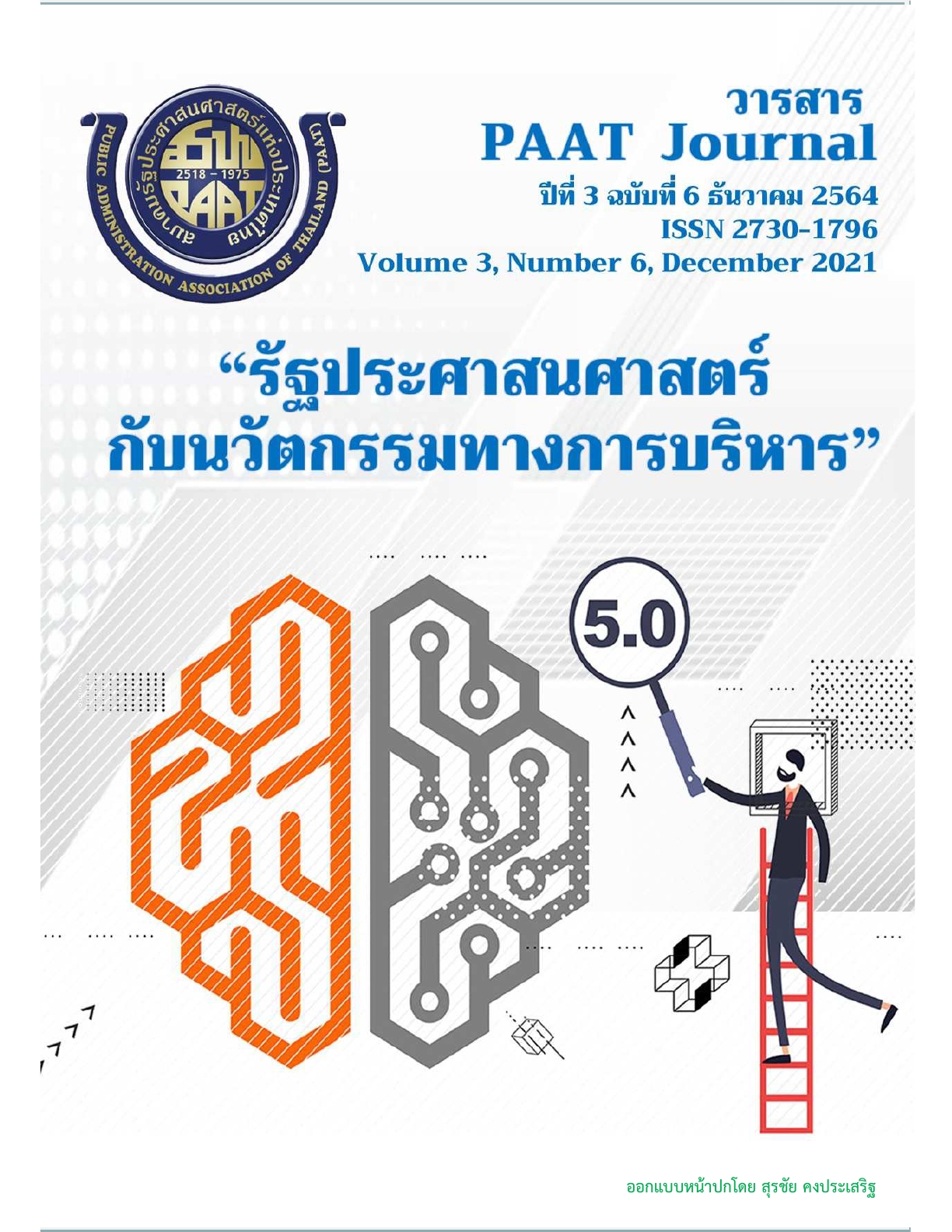Factors Affecting Public Mind Behavior of Students of Satri Angthong School
บทคัดย่อ
The objectives of this research were 1) to study the level of public mind behavior of students at Satri Angthong School 2) to study the factors affecting the public mind behavior of the students of Satri Angthong School and 3) to compare the factors affecting the public mind behavior of students. Satri Angthong School The sample group used in the study consisted of 760 students who participated in the Citizens Awareness Training Program. The research instrument was a questionnaire with a 5-level estimation scale, which had a confidence value of the entire questionnaire equal to 0.86. The statistics used in the data analysis. These were the frequency, percentage, average, and standard deviation of the overall and individual aspects of public mental behavior variables. and the level of public mental behavior the statistics used to check the quality of the analytical tool were to determine the confidence by using the Alpha coefficient method. According to the Cronbach’s alpha coefficient method, the t-test was used as a comparative test. Mean of independent variables classified into 2 groups. The F-test was used to compare the mean of the independent variables. which classified more than 2 groups.
1. The overall level of factors affecting the public mind behavior of the students of Satri Angthong School Factors affecting public mind behavior were at a very high level. When considering each aspect, it was found that the factors affecting public mind behavior were at a very high level. parenting followed by the cultivation from the school and public mind models, respectively.
2. The overall level of public mind behavior among the students of Satri Angthong School was high. When considering each aspect, it was found that the students' public mind behavior was at a high level in all aspects. In descending order: When friends don't have school supplies, I share school supplies with them. Secondly, I help to come up with the right and the right way to help my friends and people with problems. And when I see a friend or teacher panting, I will volunteer to help, respectively.
3. The hypothesis testing results found that students with gender the age difference had no statistically significant difference in public mind behavior, and the high school students of different grade levels had statistically significant difference in public mind behavior at the 0.05 level.
เอกสารอ้างอิง
Anchalika Phewphet. (2012). Causal Factors Influencing the Public Mind of Classroom Students. Secondary 4 in the district Upper Northeastern region. Thesis M.Ed. Mahasarakham: Mahasarakham University.
Apperly, I., Warren, F., Andrews, J. Grant, J., and Todd, S. 2011. “Developmental continuity in theory of mind: Speed and accuracy of belief-desire reasoning in children and adults.” Child Development Journal 82 (5): 691-1703.
Arisa Suksom. (2011). Public consciousness development for communities. Dhurakij Pundit University. : Bangkok.
Aranya Inon et al. (2019). Child development model through integrated socialization process in
Arisa Suksom. (2011). Developing Public Consciousness for the Community, Graduate Business University. : Bangkok.
Ariya Kuha. (2011). Public mind and student lifestyle. Songkhla : Department of Psychology and Introducing the Faculty of Education Songkhla Nakarin University.
Bureau of Civil Politics Promotion King Prajadhipok's Institute, 2015, Bangkok : Chaiwat Suthirat (2009). 80 innovations in learning management that focuses on learners. Bangkok : Danax Inter Corporation
Dictionary of the Royal Institute . (2003). Phra Nakhon: The Royal Institute. Ministry of Social Development and Human Security. 2017. Draft National Child and Youth Development Plan 2017- 2021. See from http://dcy.go.th/webnew/main/news_view.php?id
Nada Sasirapha. (2010). A study of the public mind and interest in learning of high school students. at the beginning of the office Educational Service Area Area 1, M.A. Thesis (Jitwatiya). Songkhla : Bunditwitiyaya Mahawatiyayat Songkhla Nakarin.
National Economic and Social Development Plan Eleventh Edition 2012-2015 / Office of the Development Board National Economics and Society, Office of the Prime Minister, Bangkok
Natnichakon Sriboriboon. (2007) The development of a causal model of volunteer spirit. of high school students in Schools under the Office of the Basic Education Commission. Chulalongkorn University/Bangkok
Patchara Suksangkhan(2021). [Sirichai Petcharak, interviewer].
Phra Suwan Poon-On. (2012). Factors Affecting Public Mind of Secondary School Students. end of monk school Pariyattham Department of General Education in the lower northern region. Thesis M.Ed. (Research and Evaluation). Phitsanulok: Graduate School Maha Vadiyayan Resuan.Rangsi Kasemsuk and Sukhumal Kasemsuk. (2007 January–March) Education Journal. 35(3) 58-59.
Richert, A., Shawber, B., Hoffman, R. and Taylor, M. 2009. “Learning from fantasy and real characters in preschool and kindergarten.” Journal of Cognition and Development 10 (1): 41-66. Roi Et Province area. interdisciplinary research journal Graduate Studies Edition, Year 8, No. 2 (2019).
Thida Suwansakornkul.(2011). A study of characteristics of reading models that affect children's reading habits. teenagers in high school Bangkok Metropolitan Administration Phatthanakan, Srinakharinwirot University.
ดาวน์โหลด
เผยแพร่แล้ว
รูปแบบการอ้างอิง
ฉบับ
ประเภทบทความ
สัญญาอนุญาต

อนุญาตภายใต้เงื่อนไข Creative Commons Attribution-NonCommercial-NoDerivatives 4.0 International License.



